Whether companies know it or not, website content largely defines the success of your business. Think of it this way: your website is often the first chance you have to market your company’s products and services to your customers. So why wouldn’t you make it a priority to have the best website content out there?
Not only does it give viewers an instant impression of the quality of your company but it also directly affects how successful your customers are in finding what they’re looking for. The quality of your content might even make the difference between making a sale and your customer going elsewhere.
What is the purpose of collecting feedback on your website content?
There are many reasons businesses collect feedback on their website. They want to be sure their customers don’t become victims of technical issues that might drive them away, such as login problems, download errors and bug reports. And while these technical flaws are heavily consequential issues in terms of website performance, it’s important to consider the other side of things as well: the website content your customers use to make purchase decisions as well as find information regarding products or services.

There are various ways in which feedback can help businesses to improve their website content. Here are a few:
1. To improve content regarding a product or service.
For ecommerce companies in particular, this content is very critical to online conversions and sales. In terms of product information, content might include product descriptions, videos, and images. So let me ask you this. How many times have you been on a website, researching a product and after looking through the specifications, you still had some unanswered questions? There are many companies out there that have made this mistake. This lack of information leaves their customers in a sort of limbo. The website cannot provide them with the answers they’re looking for so they’re forced to search elsewhere.
ROI: Increased sales and customer conversions

2. To enhance online support services for your customers.
There are many great ways of providing online support to your customers without them having to initiate contact with your business directly. This includes pages such as forums, online communities, FAQs, instructions and E-manuals. According to a study done by Forrester, “trends show that call volumes decrease after the deployment of a community”. This decrease in calls takes a huge burden off of your customer support staff as it prevents them from having to take calls from customers whose questions can be answered online. This, for obvious reasons, can help your company save on costs.
ROI: Increased sales and customer conversions, cost savings as a result of reduction in call centre assistance


Free White Paper: The importance of A good Feedback Strategy
Learn about asking the right questions in an online feedback form to get the most out of it.
3. To improve the quality of written content.
A third alternative for collecting feedback on your website content is on your news page, blog articles, etc. By capturing feedback on these pages, you are provided with input to improve the clarity of content, e.g. grammatical errors, typos, etc, as well as learn more about your audience and their interests.
How can you collect feedback on website content?
There are several ways to request this type of feedback from your customers.The two most common being:
Placing an embedded form below the content
This method is a more passive approach to asking your visitors for feedback on your content.
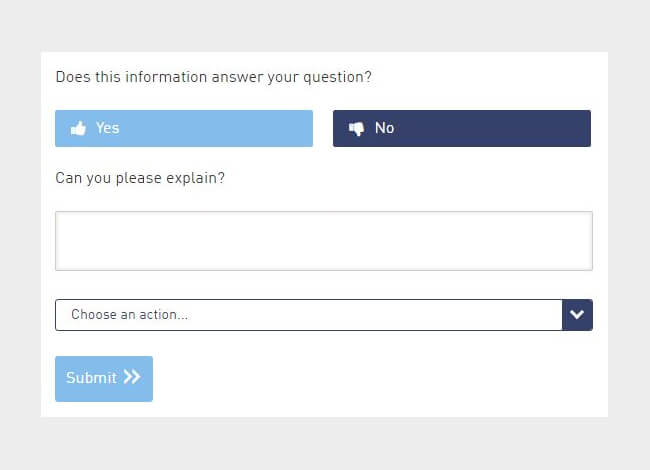
Enabling a proactive trigger when the visitor has scrolled to the bottom of the page
With this method, you can trigger a feedback form to appear in an overlay on the page. In this manner, you can extract particularly interesting feedback because if the visitor has scrolled all the way down, it is typically an indication that they’ve read the whole page through and cannot find the information they need.
You will also need to determine what kinds of questions you want to ask your visitors. Often these are very similar to the approach of the metric, Goal Completion Rate (GCR). Some examples of questions include:
- Was this (FAQ) helpful? (Yes or No)
- Does this information answer your question? (Yes or No)
- Has this information helped solve your problem? (Yes or No)
In the event that the user selects “No” for any of these questions, the next step is to either provide with them with opportunity to submit an explanation (via an open question) or provide them with a question and multiple answer options including an option, “Other” with an open answer section.
How can you analyse feedback from website content?
Lastly, there is the analysis stage. There are several ways to analyse the feedback you’ve collected on website content. Some examples:
Chart comparing Helpful and Not Helpful (on a weekly basis):
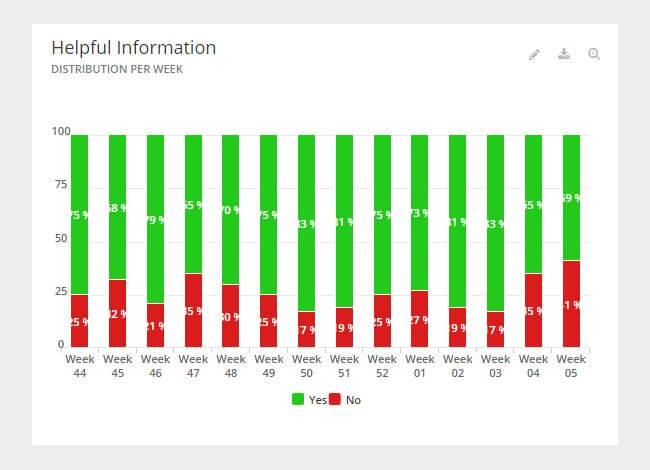
Top 5 Pages with the Most “Yes” Feedback / Most “No” Feedback:
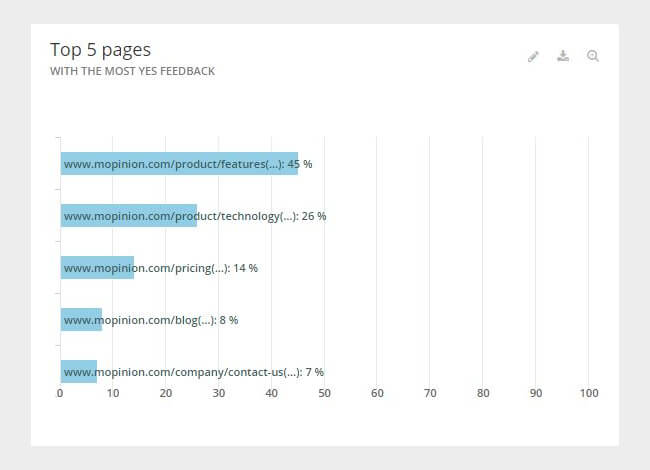
Trend lines of helpful feedback:
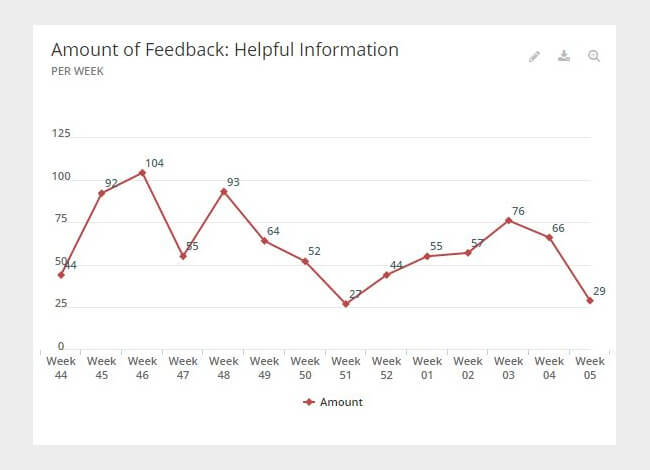
Alternative action (as a result of not finding what they are looking for):
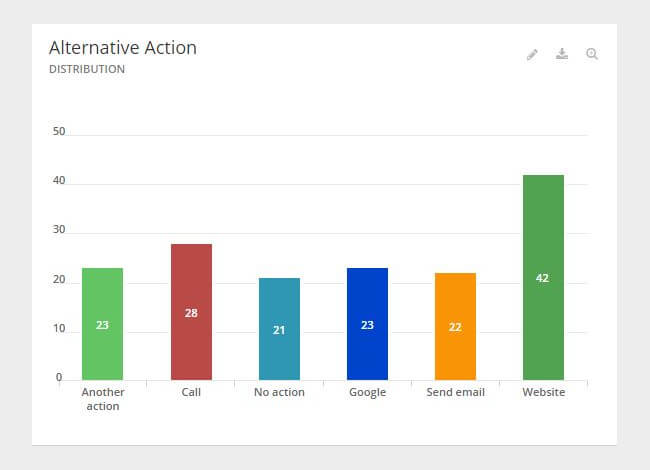
Start improving your website content
Don’t let your customers drop off just because of incomplete or poor content! Start implementing feedback forms that connect you with these customers and learn more about you can improve your products information, videos, FAQ pages and forums. Want to learn more about Mopinion’s all-in-1 user feedback platform? Don’t be shy and take our software for a spin! Do you prefer it a bit more personal? Just book a demo. One of our feedback pro’s will guide you through the software and answer any questions you may have.
Ready to see Mopinion in action?






